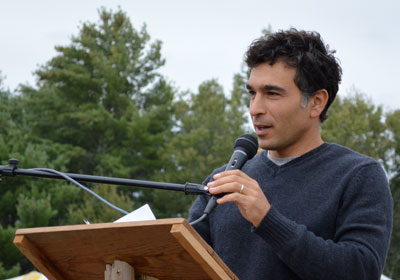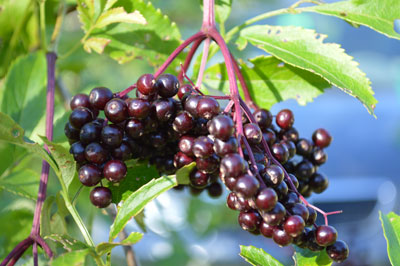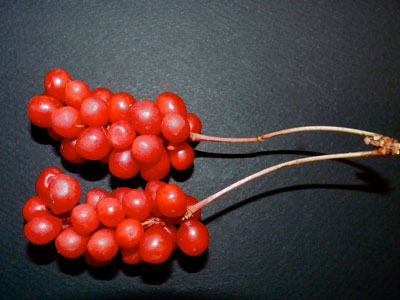 |
| Ben Falk called for a billion new gardeners to create healthy, food-producing ecosystems. English photo. |
Ben Falk, founder of Whole Systems Design LLC and author of “The Resilient Farm and Homestead,” has been testing resilient water, food, heating and medicinal systems in the context of land regeneration at the farm and homestead scales for more than 10 years. He has tested the viability of rice in a cold climate, trialed new and underutilized perennial species, spawned development of intensive microclimates for extended season production, and helped push the boundaries of what’s considered possible in storm water infiltration and erosion-prevention/nutrient-capture in a working landscape.
Falk said during his keynote speech (posted at https://www.youtube.com/user/MaineOrganicFarmers/videos) at the 2014 Common Ground Country Fair that “we have everything we need right here, right now” to re-establish the perennial-based, diverse and integrated food-producing ecosystems that were here for 50,000, 100,000, maybe even 1 million years.
For 11 years Falk has worked primarily on 10 acres of steep land with a lot of exposed bedrock, inundated soil and droughty soil in central Vermont. Most of the topsoil washed away as the land was clear-cut over the last 200 years. To grow a lot of his own food and medicine there, Falk said he’s had to adapt his goals, tools and techniques to the kind of degraded, beat up, abandoned soil found in most of the world. He related three success stories.
Seaberry Alley
The first story is about an acre of southwest-facing land that is warm but droughty and was like an abandoned gravel pit with scrubby growth, brambles, some club mosses and some exposed bedrock. Falk sowed clovers, vetch, turnip and radish, and for about five years nothing took except for one sowing of yellow sweet clover.
 |
| Among the perennials that Falk recommended growing were elderberry (‘Nova’ shown here) and Schisandra chinensis (this sample grown by Charles Martin of Montville and displayed in the Common Ground Country Fair Exhibition Hall). English photos. |
 |
Remembering the swales he learned about in a permaculture course and using the little backhoe on his tractor, he made a few swales in April, about six years ago. He kept seeding, and after about six weeks, all the seed started to take. By mid-July, more biomass had grown on this 1-acre slope in three months than had in the last 20 years – almost enough to scythe. The swales were catching, slowing and spreading water and letting it sink into the ground. This ecosystem that may have been healing very slowly was suddenly healing very quickly and becoming decent pasture, said Falk. In the past five years, it has gone from the least productive part of his property to one of the most productive. It can be hayed two or three times per year.
“We’ve planted the area with seaberry (Hippophae rhamnoides), plums, hazelnuts, a wide variety of foods and medicines, and pasture,” said Falk. After rotating sheep through the site, “it really began to take off.”
Absorbing the Shock of Irene
The second story relates to 2011, when Hurricane Irene dropped about 6 inches of rain on his land in 12 hours. “At the end of the storm, I walked from the high part of the property, where about 20 acres of water comes down onto our 10 acres. That 20 acres is mostly forested. I followed the course of the water – little areas that were like rivulets were like small creeks at this point. There was some silt in the water, some cloudiness. I walked down to our top pond, and the water was a little cloudy.”
The second pond, about 50 vertical feet below, was receiving mostly clear water from overflow from the top pond.
“By the time I got to the bottom … a small settling pool that’s usually empty … was completely clear. About 5 gallons per minute of clear water was flowing into this pool.
“I realized we were filtering, processing, infiltrating and settling out 30 acres of 6 inches of rain – 28,000 gallons per inch per acre; millions of gallons that day – coming down through this steep, beat-up old piece of land, and no erosion was happening. Erosion from the natural forest above us was actually being absorbed by our agricultural system.
“So this gardening or homestead system … was doing all that regenerative work at a time when it was receiving a lot of stress. It showed me that our human-made agricultural systems can not only reduce flooding in flood plains and help restore our watersheds,” they can also hold water flowing into them.
This also means that all the nitrogen pollution in rain now is actually “a fertility event,” said Falk.
A Food System Naturalizing Itself
Falk related his third story: “I was walking last fall by our rice paddies, by some of our terraces where we rotate some of our vegetable staple crops. I saw a white oak tree. Oaks don’t grow near us – and certainly no white oak family trees. So the food system seems to be starting to naturalize itself to this place.”
Similarly, shiitake mushroom is starting to naturalize itself in the woods around his shiitake laying yard.
Falk pointed out that the apple, native to Asia, is a relatively recent, hugely beneficent addition to our landscape in the last few hundred years – one that has naturalized and benefits us and many other species in our ecosystem.
Falk realized that these eureka moments were not really “Aha!” but “Ah, duh!” moments. “As long as we’ve been humans, we’ve been moving seed of valuable plants, or fungi, or animals, to the places we go, in a very passive way for the most part, sometimes more active, and trying to garden in the places we’ve traveled around the world.”
In the last few years he’s been noticing wild foods, such as lambsquarters, dock, dandelion, amaranth, wild fungi, “and I realized that there’s also a food system here that planted itself way before I got here, and continues to plant itself, already offering massive amounts of food and medicine to us.”
All our farms and gardens, said Falk, were old-growth forests not long ago: “places where a 6-foot-diameter sugar maple rose 100 feet, only to top out beneath a canopy of chestnut; these chestnuts rising up another 50 to 100 feet with diameters of over 10 feet. This is the kind of life that covered almost every acre in this part of the world for hundreds of human generations before us. And this wasn’t a wilderness. There were people here. These were lightly tended landscapes, and these systems stopped only a few generations ago. So the landscapes we inhabit today are mere infants of their former selves. We’re farming and gardening in a stunted system that is just barely beginning to recover from two centuries of looting.”
Falk does till part of his landscape. “Though my garden feeds me abundantly, when I’m working there I sometimes realize how against the grain of the ecosystem this activity really is. If I stop tending my garden for even a few weeks or a month or two, weeds begin to thrive and vegetables begin to diminish. Then I step out of the vegetable garden and into the whole of the land that surrounds me, the grazed perennial polyculture, the food forest of walnuts, pear, apple, cherry, scores of berries, pasture and many other plants and animals, as well as a lot of wildlife. Despite large lapses of tending these spaces, these perennial systems keep developing on their own. They want to be here, unlike my vegetable garden.”
He talked about a pear tree he planted eight years ago and tended to until it was a littler higher than deer browse. “In the last few years I haven’t really touched it. At some point a perennial system takes on a life of its own and becomes a food-producing, medicine-producing and material-producing system of its own accord.”
Creating Healthy Ecosystems: A Billion Gardeners Needed
Falk said that organic farming that depends on a bare earth approach and on tillage is not sustainable, much less regenerative. “Certainly we can feed a lot of people very quickly with annual agriculture, and it has a crucial role. The people who have figured out how to generate the fertility they need on-site while using truly solar-powered traction or crop management, like animal or human power, are truly at one of the most important, cutting edge food systems. However, resetting ecologies to bare dirt every year is simply not compatible with evolving complex, diverse and healthy ecosystems.”
To create those healthy ecosystems, Falk said, “What we may need for the long haul is a billion new gardeners. The world hasn’t fed itself for long from farming. We fed ourselves for a very long time from gardening small plots of land, hunting, gathering. Since the advent of agriculture, we’ve done a remarkably poor job of feeding ourselves while wrecking the world at a mind-numbing and impressive rate never seen before agriculture. Only since the advent of agriculture has mass starvation existed.”
Permaculture, said Falk, is trying to answer questions about what kind and scale of food system we most need today; how to integrate grazing animals into perennial polycultures; how to work with trees as allies in our food system; how to make these systems economically viable.
“There are no easy answers; there are a lot of false hopes; there are real hopes, too. The fact that we humans can make a living from perennial-based systems of plants and animals is very hopeful. The track record is there for us to explore, replicate and adapt. Often we need to look at indigenous forms of land use to do this.”
In Maine and North America, a continental-scale food forest existed everywhere without tillage and with many, many people, said Falk – a garden that happened to look like a chestnut forest or an oak forest. “A garden can be 100 acres; a garden can be the size of the entire north woods … Perhaps it’s not the scale that should define the term ‘gardening’ but the sort of relationships engaged in. Aldo Leopold said, ‘A farmer is one who determines the plants and animals he shares his home with.’ Perhaps a gardener is one who chooses to live and also let live; to chose for some species and against others; but on the whole to establish and then promote the most diverse, productive and robust system not just for ourselves but for the rest of the living systems in that place, to get a yield while supporting the evolution of an ecosystem. That’s what we call permaculture.
“We know that it’s been done before. Excepting in the very recent eye-blink in human evolution, deep connection to and a mutually beneficial participation within our ecosystems is simply what we’re made of.
“We’ve forgotten much, and remembering might take awhile, but we can begin and continue now in our gardens. With the collective experience, wisdom and projects found right here, right now, we are hot on the trail of clues toward again becoming native to our places.”
Q and A
Asked how young people can afford to farm, Falk suggested tapping philanthropic enterprises or working for wealthy landowners and using underutilized acres.
Asked about his favorite plants, he listed seaberry, which associates with nitrogen-fixing actinomycetes, has a nutrient-dense berry with omega-7 and omega-3 fatty acids, is almost drought-proof, tolerates salt and can grow on sand if it has full sun and mulch. Male and female plants are required. Harvesting the fruit is slow, but you don’t need a lot for its medicinal qualities, said Falk. Foxgreen Farms in Maine is working with it. Falk provides plants and scionwood.
Elderberry is another good choice that is easy to grow. Black currents are good, too, but require more care than elderberry or seaberry [and are banned for sale in Maine].
A nut tree “is fat and protein that grows on a tree,” said Falk. “It’s like a cow that will produce for 200 years without having to be fed.” He mentioned chestnuts as well as Siberian stone pine and Korean nut pine, which produce pine nuts.
He also discussed schisandra and aronia, important medicinals. He plants aronia in the compacted soil of berms of ponds, as it doesn’t root deeply, and all over “really rough soil.”
Regarding soil building, Falk said he is testing his soils more and more. He does remineralize – adding greensand and azomite as one-time amendments when first digging a soil. He supports using materials that are available now – rock dusts, inoculants, a little diesel – if they can help move us toward regeneration.
Regarding mycoremediation: “Working with fungi and with mycelium … has by now become second nature on our site,” said Falk. He has had success mulching with wood chips and adding fungal inoculants – primarily wine cap stropharia (Stropharia rugosoannulata). “We originally planted about 200 trees bare-root into our site and mulched them with wood chips. A year later, during the summer, all these mushrooms started coming up. A friend came by and asked why we weren’t eating our wine caps. This mycelium is everywhere now on our site. It probably came in with our root dips. We root dip our plants with … beneficial organisms. We grab some of this mycelium [and] put it anywhere there’s new woody debris; even slash logging debris. This mycelium is even in places that grow grass now, coming in from the bases of trees. Scientists are beginning to understand that mycelium can move not just water and nutrients but information across a landscape, over thousands of feet or maybe even farther, increasing the resiliency of a place.”
Asked how long to wait before running sheep on reclaimed land, Falk said two to three months to one season after seeding, depending partly on the slope of the land. “But rotating electronet fencing for sheep through a polyculture with trees and shrubs everywhere is a challenge,” he added. “Cows and geese and polywire work better. Once a woody perennial is three or four years old, depending on the sheep and the plant, you can have them coexist. Goats are a bigger challenge.”
– Jean English
